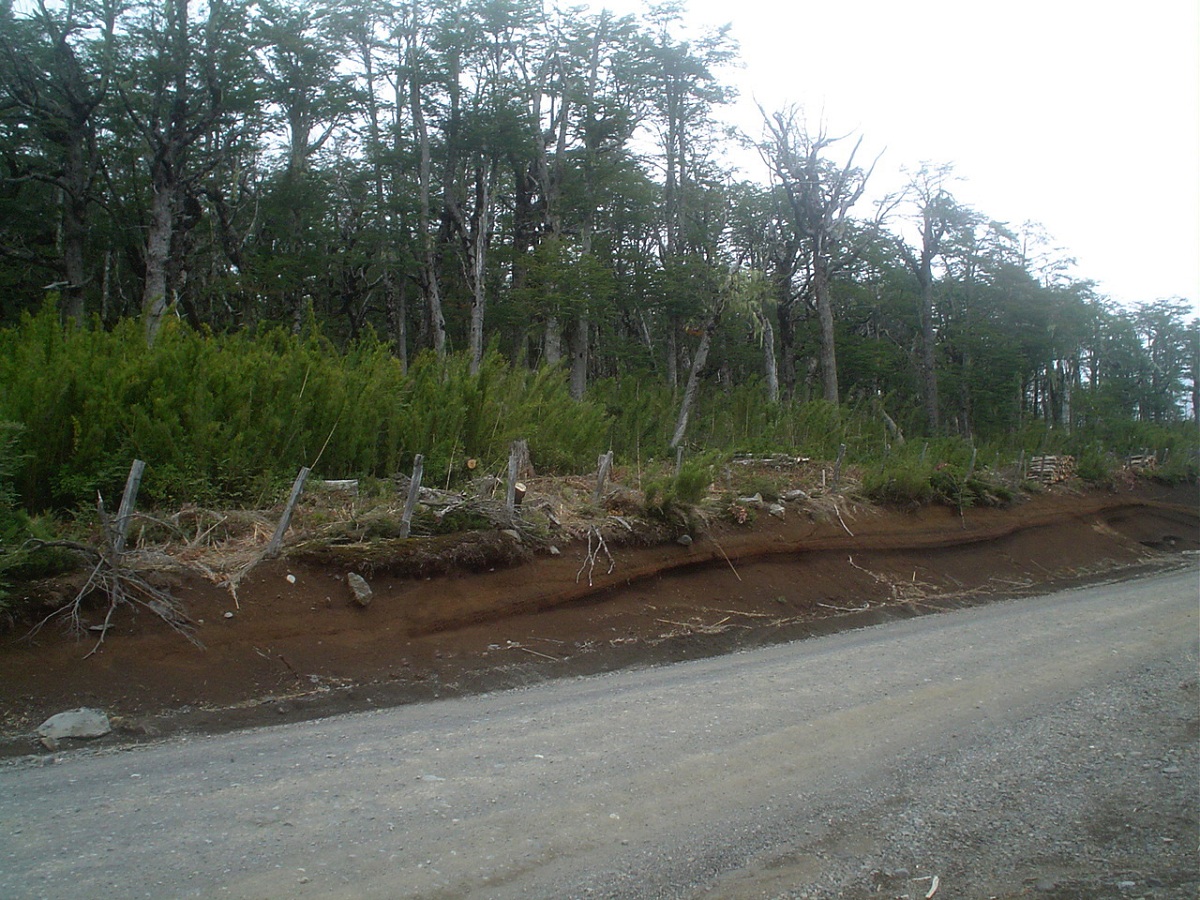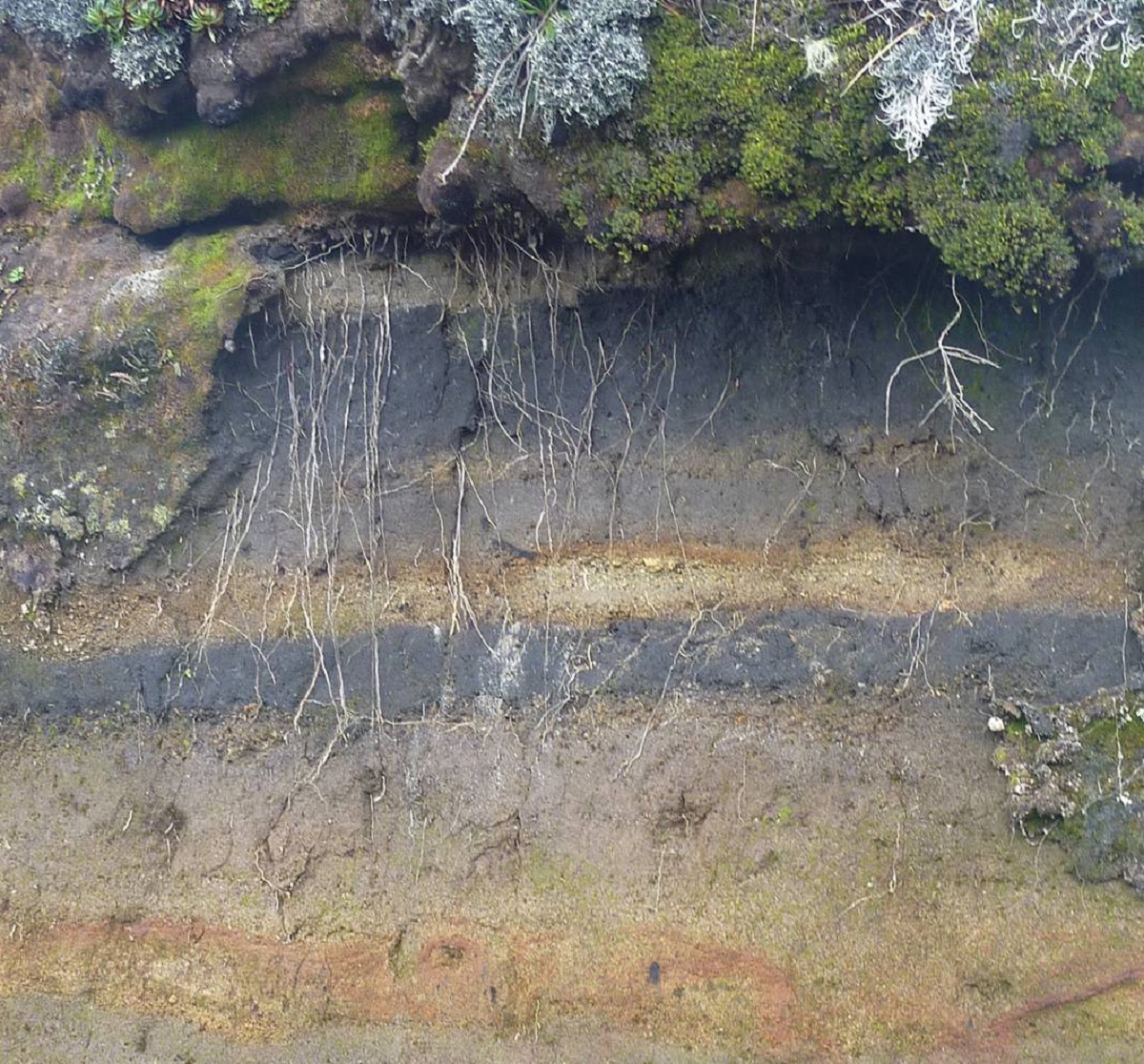
Throughout the world there are different types of soils. These types of soils vary depending on their texture, their physical and chemical composition, their depth, porosity, permeability and color, among other characteristics. Today we are going to talk about a type of soil called andosol. It is a type of volcanic soil that forms on volcanic ash and glass as well as other pyroclastic materials.
In this article we are going to tell you about all the characteristics and properties that andosol has.
Key features

It is a type of soil that grows on volcanic terrain. When they are young they have a dark color and are highly porous. This porosity is due to the type of rock from which it is formed. As we know, a soil is composed mainly from a bedrock. This rock was disintegrating and altering with the passage of time and the action of the different geological agents. Depending on the type of predominant geological agent in an area and the characteristics of the composition of said soil, we will have one type or another.
Andosol is a soil with high permeability, good structure and easy to lock. It has considerable fertility although it has some limitations when it comes to using them for agriculture. However, it is a soil widely used in the field of agriculture whenever the conditions of the relief allow it. The location of this type of soils is generally in regions with a type of active volcanism.
These soils have traditionally been regarded as a boon to developing cultures and peoples. This is due to the fact that these civilizations can settle on these soils despite the natural risks that may threaten since they have a good level of fertility. If we analyze some densities of urban centers and developing populations, such as the countries of South America, we can see that the Andean mountain ranges have active volcanoes and are bordered by very little fertile lands typical of tropical forests.
An andosol is that soil that has a Vitric or Anndic horizon. These horizons begin from 25 centimeters deep as a result of this the soil surface. It has no other diagnostic horizons unless it is buried by sediments or other soils and usually occurs at a depth of about 50 centimeters.
Detailed description of an andosol

These are soils with a tendency to black color and with entirely volcanic landscapes. The parent material is mainly volcanic ash, although it can also be formed through tuffs, pumice, ash and other volcanic ejecta. The environment of these soils is usually surrounded by undulating reliefs that are mountainous. It needs humid, arctic to tropical regions with a wide range of vegetation types. It is this wide range of vegetation that allows the soil to have a high level of nutrients.
Regarding the development of the profile of this soil, it usually has an AC or ABC profile. Layer B of this soil depends on how deep it is. Normally this horizon of alteration in depth tends to exist in those soils with a more clay texture. It is a soil with rapid weathering that resides in a high biogeochemical alteration due to the elements of the volcanic materials that it has. These materials are highly porous and result in an accumulation of stable complexes of both organic and mineral materials such as imogolite and ferrihydrite.
Uses and formation of andosol

One of the main uses for andosol is in cultivation. Being a type of soil with a high level of fertility, it is used to grow a wide variety of plants. The biggest limitation that we have mentioned above is its great capacity to retain phosphorus in a non-bioavailable way. That is, it is a soil capable of having high levels of phosphorus but that cannot be used or assimilated by the roots of the plants. This makes it a somewhat poorer soil since, although it has a remarkable amount of nutrients, it cannot be used by the plant. Also, many of these soils are found in places like steep topography.
When the soil is in places with great relief and steep areas, it is usually a limitation served with a view to putting it into cultivation. If the soil has a more pronounced relief, it will not have an optimal distribution in its profiles and horizons where the nutrients necessary to supply the plant are found. Also, we must take into account runoff through precipitation. On a sloping terrain, rainfall generates greater runoff that will end up dragging a large part of the profiles that have a higher level of nutrients so that the crop can develop in good conditions.
This type of soil is characterized by the presence of an Andic horizon or a Vitric horizon. Those Andean horizons are rich in minerals similar to Alofan and have high complexes of humus and aluminum while the Vitric horizon contains volcanic glass in abundance.
The formation of this type of soils depends largely on the rapid chemical weathering, porosity, permeability, amount of fine-grained materials, as well as the presence of organic matter. All these variables are those that define the type of soil that is going to form on a certain terrain.
Properties
In the morphological characteristics of a typical andosol we find the AC or ABC horizons. The first horizon is usually much darker and wetter than the rest. The organic matter content of this surface horizon is around 8% although they can be found to have up to 30% in organic matter.
Most of these soils have good internal drainage due to their high porosity. Thus, they are quite interesting soils from the point of view of efficient irrigation. This thermal porosity prevents rainwater from accumulating, which is a determining factor for the development of many plants.
It has a large amount of magnesia dog minerals as they are olivine, pyroxenes and amphiboles. It also has feldspars and quartz from the sand and silt fractions. Their good aggregate stability and high water permeability make these soils relatively resistant to water erosion. This is another very important advantage for them to be used in crops.
I hope that with this information you can learn more about andosol.